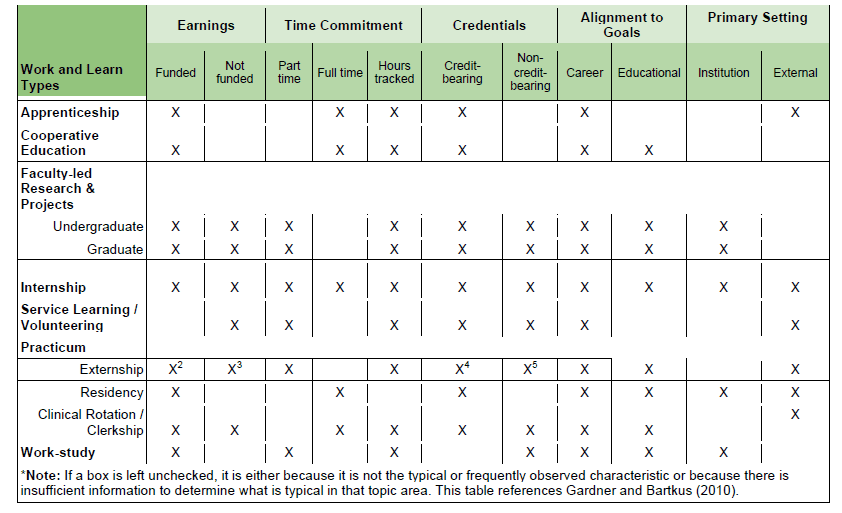According to the U.S. Census Bureau, the majority of the 30 million students in the U.S. are working learners – that is, they work at least part-time while going to school. In a report released yesterday, “Who Does Work Work For? Understanding Equity in Working Learner College and Career Success,” we found that nearly 60 percent of college students are simultaneously enrolled in work and school. This raises a few questions, such as: what types of formal work and learn opportunities are available to students? What characteristics do different work and learn options have? Are there state or federal work and learn policies in place to regulate work and learn opportunities? Recent work and Learn research takes a deeper look at these questions with a comprehensive overview of work and learn programs.
Types of Work and Learn Approaches
Working learners can engage in working and learning in several different ways such as:
- Apprenticeships
- Cooperative Education
- Faculty-Led Research
- Internships
- Practicum
- Residencies
- Clinical rotations
- Externships
- Clerkships
- Service learning/volunteering
- Work-study
Characteristics of Work and Learn Approaches

Policy regulating Work and Learn Approaches
Federal and state laws comprise several aspects of work and learn experiences. Federal policies include federal minimum wage law, federal work-study, federal working age laws, internships, and federal service-learning programs such as AmeriCorps. These policies can be found in U.S. code, the Fair Labor Standards Act, and the Higher Education Act.
While the specific state laws concerning work and learn programs vary from state to state, a few common work and learn policies exist. These include: state minimum wage laws, internships & apprenticeship laws, state work-study laws, and cooperative vocational technical education rules.
For a more in-depth look at work and learn approaches, characteristics, and state and federal work and learn policies check out our recent Work and Learn Research here.
